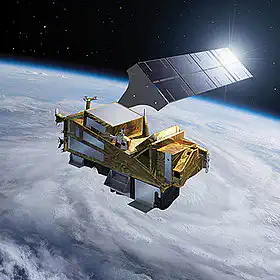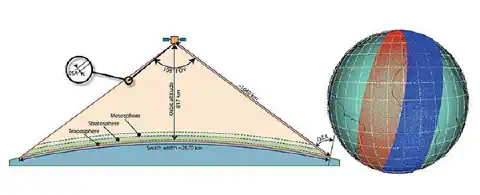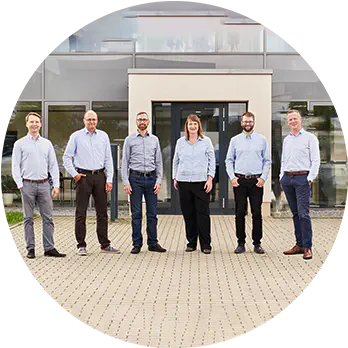
Optics for Sentinel-5
Reference project
Atmospheric measurements with high spatio-temporal resolution from a low-Earth orbit
For the analysis of atmospheric components such as O3, NO2, SO2, etc., ESA initiated the Sentinel-5 project together with the European Union. A central objective of the missions spectrometer system, which is expected to be deployed on the MetOp-SG A spacecraft from 2022 onwards, is the monitoring of trace gas concentrations. asphericon manufactured durable optics for one of the subsystems of Sentinel-5. Thanks to the company’s High-End Finishing technology, these optics have the best surface specifications and meet all the necessary space and weight requirements by being precisely cut into rectangular shapes.
Project description
Analyzing atmospheric components plays an important role in terms of air pollution, global warming or weather forecasts. The Sentinel-5 project was launched as part of the Copernicus program of ESA and the European Union to collect these measurement data. Central component of its mission is the monitoring of the trace gas concentration for atmospheric chemistry and climate applications. Sentinel-5 is an instrument on the MetOp-SG A spacecraft and consists - amongst other components - of a high-resolution spectrometer system, including five spectrometers for a wide operating range (ultraviolet to shortwave infrared). Thanks to its large swath, it will provide full coverage of the Earth daily. Level-2 products (like O3, NO2, SO2 etc.) will be available in near-real time (within 2h 45‘ of sensing). With respect to the limited space requirements, a compact and light design of the collimator lenses was required. Furthermore, a minimum of irregularities and roughness of the lens surfaces were particularly important - for best imaging properties under extreme conditions.
Project realization
asphericon was able to provide ultra-precise optical components for a SWIR subsystem in the frame of Sentinel-5. The lenses included rotationally symmetrical spheres, as well as complex cylinders. All optical components consist of durable materials (fused silica, silicon and zinc sulfide), while the geometrical shapes show different combinations (concave/concave, convex/concave, convex/convex), with diameters ranges from 87.7 mm - 129.4 mm. The lenses were cut with high precision in rectangular shapes due to light weight requirements. In combination with High-End Finishing processes asphericon was able to realize irregularities ≤ 1fr and therefore to meet the high customer requirements. By using the inhouse Ångström-polishment short wave spatial frequencies could be minimized and lowest surface roughness (≤ 1 nm) achieved.
Parameters

Fig. 1 MetOp-SG A Satellite | © esa
- Foreseen to provide synergetic, complementary data set between 2022 and 2043
- Design lifetime: 7.5 years
- 7 different spectral bands: UV-1 (270-310 nm), UV-2/VIS (300-500 nm), NIR-1 (685-710 nm), NIR-2a (745-755 nm), NIR-2b (755-773 nm), SWIR-1 (1590-1675 nm), SWIR-3 (2305-2385 nm)
- Generated data volume: 139 Gbits per full orbit

Fig. 2 Sentinel-5 observation geometry | © esa
Objectives
- Globally monitor key air quality trace gases and aerosols as well as composition-climate interactions
- Main data: O3, NO2, SO2, HCHO, CHOCHO, CH4, CO, aerosol and cloud properties
Optics for Sentinel-5 at a glance:
- Manufacturing of rotationally symmetric spheres and complex cylindrical optics from resistant materials (fused silica, silicon and zinc sulfide)
- Lens specifications: Diameter 87.7 - 129.4 mm, concave/concave, convex/concave and convex/convex, irregularities of ≤ 1fr and lowest surface roughness ≤ 1 nm
- Cutting of the optics into rectangular shapes to reduce the required space and weight
Disclaimer: The contract was carried out under a program of and funded by the European Space Agency. The view expressed herein can in no way be taken to reflect the official opinion of the European Space Agency.

